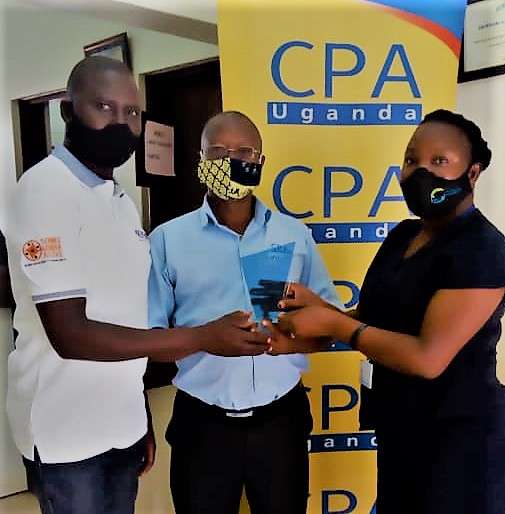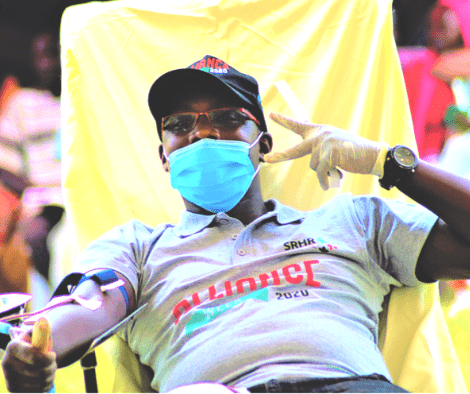Emergency Covid-19 WASH Response
About the Project:
According to WHO, infection prevention and control (IPC) is a scientific approach and practical solution designed to prevent harm caused by infection to patients and health workers. It is grounded in infectious diseases, epidemiology, social science and health system strengthening. IPC occupies a unique position in the field of patient safety and quality universal health coverage since it is relevant to health workers and patients at every single health-care encounter.
Poor WASH and IPC lead to health acquired infections, transmission of diseases from health facilities to communities and increased use of antibiotics and exacerbate outbreak and spread of infections- in this case- COVID- 19. On the contrary, effective IPC reduces hospital-acquired infections by at least 30% (WHO 2016). Therefore the Emergency COVID-19 wash response is set to enforce the project between April-July 2020 in all public gathering areas.
Project Goal & Objectives:
Increasing access to Sexual and Reproductive Health information and services as well as anti-Covid 19 emergency.
Objectives
- Hand Hygiene (hand washing with soap and running water or alcohol- based hand rub AHRB/ sanitizer) and safe cough and sneeze etiquette in all settings.
- Ensure availability of safe water in adequate quantity and sanitation services at all time.
- Environmental cleanliness (cleaning floors, surfaces and any touch points and linen)
- PPE and WASH equipment disinfection (aprons, boots, googles, waste containers, water containers)
- Infectious and hazardous waste management.


Patients and Health workers.
COVID-19 emergency response requires a triangulated approach to inform (C4D), educate (RCC, WASH and Health) as well as provide the needed resources (WASH and IPC).
First steps for the plan include:
-
- Undertake a quick assessment (using WASH-FIT) to determine HCFs without WASH services and those with the highest patient population which could undermine their safety. In the framework of the contingency COVID-19 response plan, it is likely that MoH will identify HCFs that are utilized for screening only and those for patients treatment; each type will require a different degree of IPC intervention and a coordination with MoH and WHO to clearly share roles & responsibilities. The WASH assessment will need to be done based MoH priorities in terms of geographical areas and HCFs as not all can be tackled at the same time. Capacity assessment must be done, and training health care workers and non-medical staff on IPC measures in coordination with Health colleagues may be needed.
- Prepare a plan for providing and improving or upgrading WASH services and supplies for O&M and treatment. It is important to procure and distribute critical hygiene and prevention items like soap, hand-sanitizer, chlorine (HTH 60-70%) commercial disinfectant (e.g. Clorox) and disinfection materials (mop, buckets etc.), masks drinking water dispensers, and personal protection equipment for use of hygienists in HCFs.
- Develop a simple system to monitor functionality of services – in both supported and nonsupported HCFs, the following aspects must be monitored: availability of water and chlorine, hand washing systems (water/soap, alcohol rub /hand-sanitizers or chlorine water), treated water, toilets cleanliness and thorough disinfection (separated from suspected/confirmed cases and other persons), fecal sludge management where required, medical and solid waste regular disposal and safe elimination.
Water is required to support personal hygiene including hand washing with soap as a key preventive measure. Water should also be available for regular cleaning and disinfection purposes, personal hygiene, cleaning, disinfection, laundry and other activities while sufficient drinking water remains crucial. The Emergency COVID-19 Response project therefore set a few theories of change to act upon as follows;
- Ensure that safe and adequate running water is available in HCF especially at points of care (screening rooms, examination rooms, injection rooms, wards, treatment rooms, labour rooms, delivery rooms and postnatal care rooms as well as mortuaries), and for environmental cleaning, laundry activities, personal hygiene and decontamination of equipment and surfaces.
- If there is no running water, all means must be put in place to secure continued availability of water for health care facility use, this includes water trucking or installation of water storage.
- In areas where trucking water is opted for ;
1.Each truck load should be checked for free residual chlorine (>0.5 mg/l)
2.Allow water to settle in the tank before releasing for use.
3.Ensure regular cleaning of storage tanks.
- Ensure the water is safely treated. A number of measures can be taken to improve water safety starting with collection and safe storage of treated water in regularly cleaned and covered containers. Furthermore, conventional, centralized water treatment methods which utilize common filtration system and disinfection should inactivate SARS-CoV-2.
- All water used within HCFs should have a residual concentration of free chlorine of ≥ 0.5 mg/l after at least 30 min contact time at pH < 8.0. A chlorine residual should be maintained throughout the distribution system.
- When possible, provide water stations with pedal-operated taps and devices or water dispensers with sensors to minimize hand contact and reduce the risk of infection; avoid installation of metal taps where possible and use elbow operated taps (as in surgical rooms) where feasible; in most cases though, where standard taps are in use, ensure taps are regularly disinfected together with regular hand washing or provide paper towels to use when opening and closing taps and facilities for disposing of towels safely.
